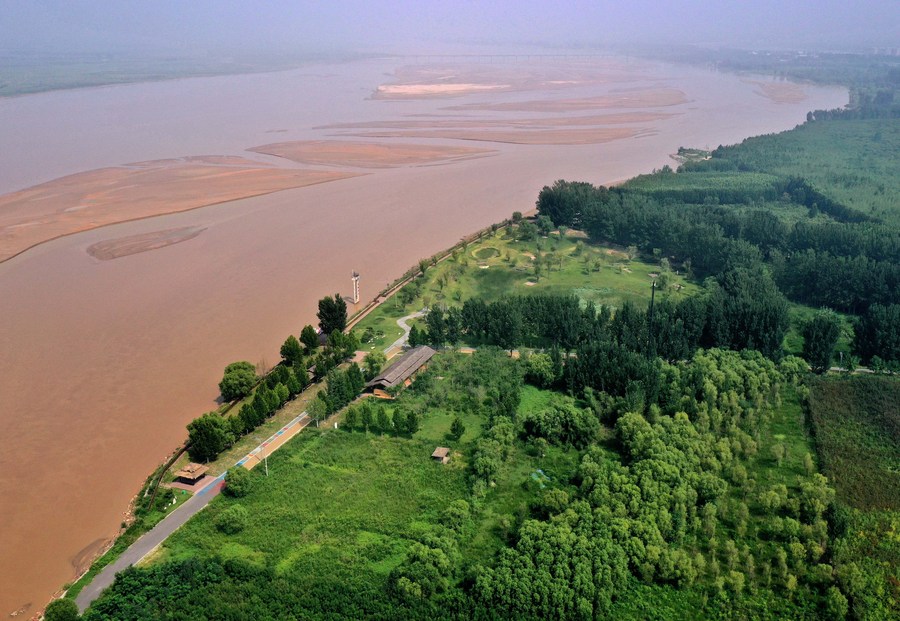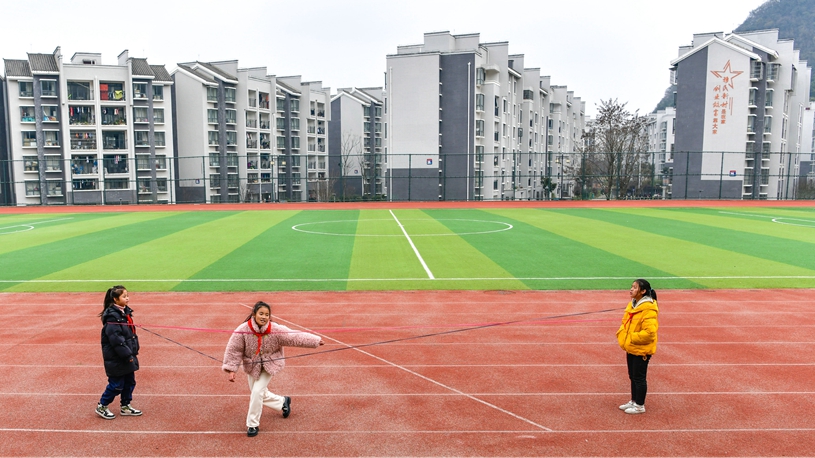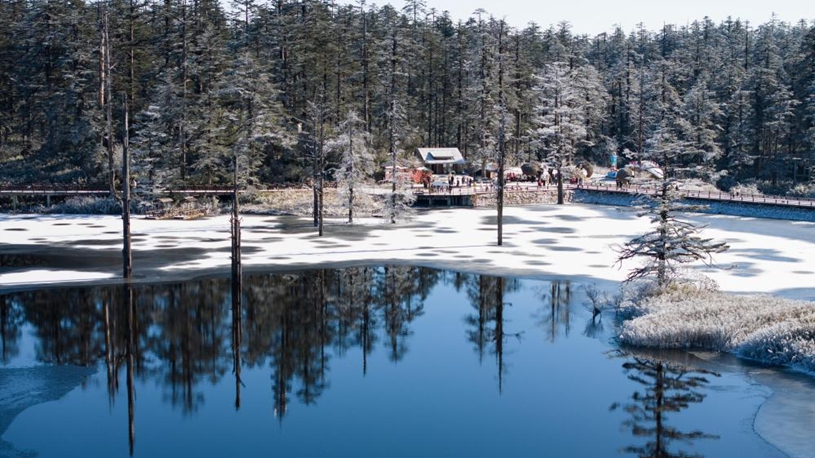
Aerial photo taken on Aug. 11, 2022 shows a park along the Yellow River in Zhengzhou City, central China's Henan Province. (Xinhua/Li An)
ZHENGZHOU, Dec. 25 (Xinhua) -- When the Jinghan Railway, linking the capital Beijing with the central Chinese city of Hankou, was completed 117 years ago, steam trains, emitting white smoke and sounding their whistles, traversed the Zhengzhou Yellow River railway bridge for the first time.
Now, downstream and not far from that historic site, high-speed trains, hurtling at a speed of 350 km per hour, thunder across a new bridge -- Zhengzhou Wantan Yellow River highway railway bridge, connecting Henan provincial capital Zhengzhou with Shandong provincial capital Jinan, and thereby also linking central China and east China.
On Dec. 8 this year, the Jinan-Zhengzhou high-speed railway was completed and opened for traffic. Covering a distance of 407 km, it enables a direct travel time of one hour and 43 minutes between two cities both boasting trillion yuan-GDP statuses.
The railway traverses the second-largest river in China, the Yellow River, and the Wantan bridge, spanning a total length of 4,377 meters, was a key and challenging project in constructing this route.
"The considerable span and high operational speed posed significant obstacles during bridge construction," said Xu Xudong, chief engineer of Henan Intercity Railway Co., Ltd.
Xu said that an extensive data collection process, with nearly 30,000 data points per km, ensures precise control of track alignment, keeping errors within 0.5 millimeters. This approach, combined with innovative construction techniques, guarantees the safe passage of trains over the bridge at a speed of 350 km per hour.
Zhengzhou's association with Yellow River bridges can be traced back over a hundred years. More than a century ago, the completion of the Jinghan Railway and the Zhengzhou Yellow River railway bridge brought about a transformation of the transportation dynamics of the city of Zhengzhou, and also had a lasting impact on the overall development pattern of the central plain region.
Construction of the Zhengzhou Yellow River railway bridge started in 1903 and it is famous as China's inaugural railway bridge spanning the Yellow River. Building a bridge within the unpredictable and turbulent Yellow River channel, characterized by high sediment content and fierce currents, was no easy feat at that time.
Despite an operational speed of less than 15 km per hour, the bridge shattered the traditional transportation pattern in China, which relied heavily on waterways and post roads.
"Sitting in a strategic position, the Zhengzhou Yellow River railway bridge was a focal point of contention. Due to repeated artillery bombardments, it teetered on the brink of collapse," said Wang Ruiming, member of the editorial committee of Zhengzhou Literature and History Materials.
Between 1949 and 1952, various departments undertook multiple reinforcement efforts to strengthen the bridge. However, a substantial disparity existed between its transport capacity and traffic demands, while a massive flood in the Yellow River inflicted severe damage on the bridge in 1958.
This bridge is no longer functional, but it has not vanished completely. In July 1987, demolition of the bridge commenced. Its southern end, comprising a 160-meter section, was preserved as a historical relic and commemorated with a monument.
Now, there are already 10 bridges connecting both sides of the Yellow River in Zhengzhou. "Enhanced connectivity is expected to accelerate the flow of resources, offering robust support for the deepening of cooperation, leveraging complementary advantages, and promoting ecological protection and high-quality development in the Yellow River basin," said Jia Ruoxiang, an expert with China's Academy of Macroeconomic Research. ■












